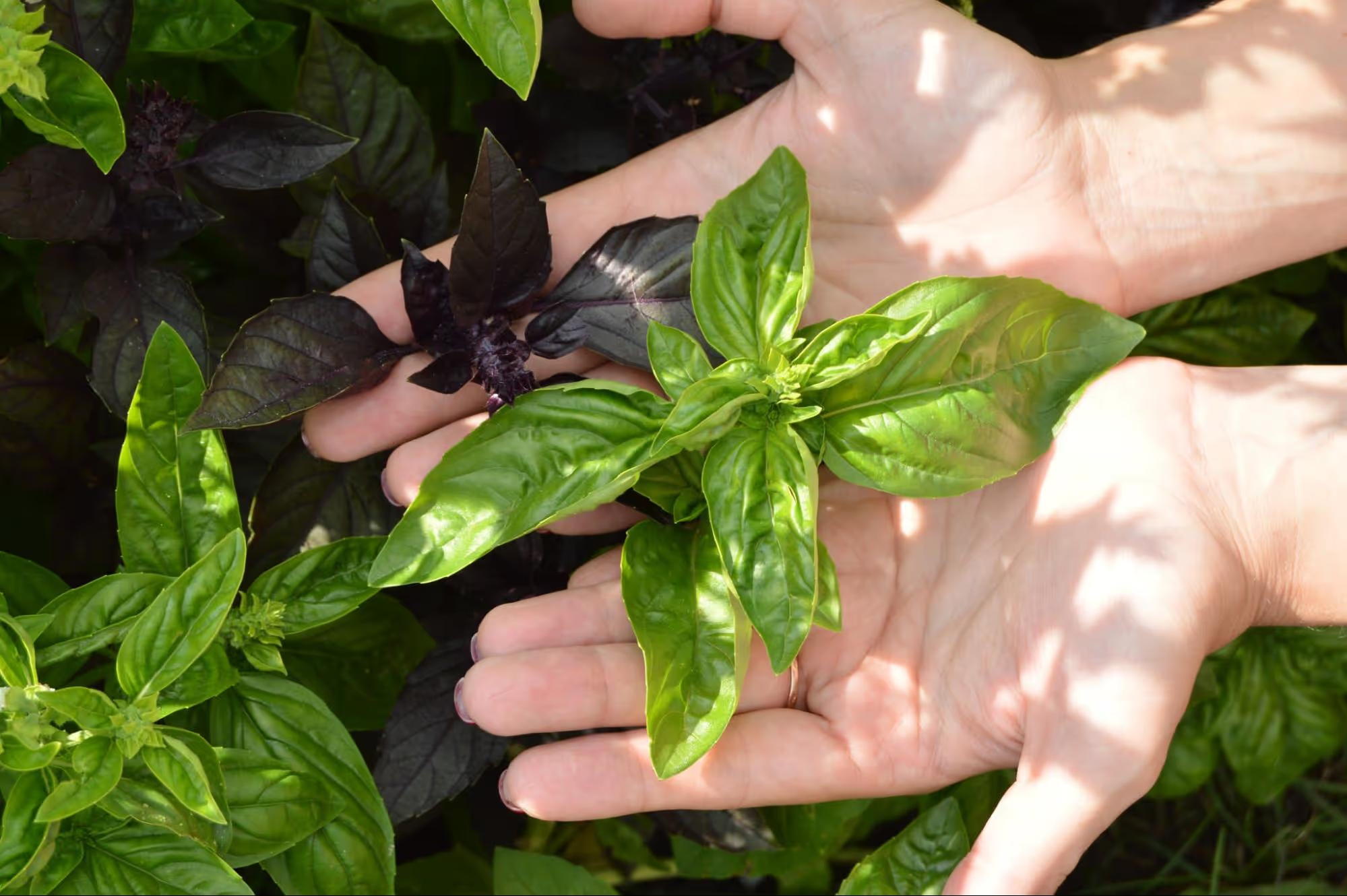
Thai basil is a plant widely used for its medicinal properties, but like any plant, it can be vulnerable to various diseases and pest infestations. These diseases and pests can significantly affect the plant's growth and quality, threatening its medicinal value and reducing its therapeutic effectiveness. Additionally, the presence of disease can weaken the plant, making it more susceptible to other pathogens and stress, which can further negatively impact its survival.
Downy mildew is one of the most common fungal diseases that affects Thai basil. It is caused by the fungus Peronospora belbahrii, and symptoms include yellow spots on the upper side of the leaves and a grayish-white layer on the underside. This disease can quickly destroy the plant, and in severe cases, it can lead to its complete demise.
Treatment:
Powdery mildew is another fungal disease that often affects Thai basil, especially when conditions are excessively warm and dry. A white, powdery layer appears on the leaves, which can hinder photosynthesis and slow down the plant's growth. Powdery mildew spreads quickly, so it's important to act promptly.
Treatment:
Gray mold is another fungal disease that affects Thai basil, particularly in humid conditions. It is characterized by a grayish-brown layer on the leaves and stems, which spreads through the plant. The disease usually affects the lower parts of the plant and quickly spreads to healthy parts.
Treatment:
Thai basil is susceptible to various pests that can damage the plants and slow their growth.
Aphids
Aphids are very common pests that attack Thai basil. These small insects can transmit viruses and other diseases while simultaneously sucking sap from the plant, causing leaves to fall and slowing growth.
Treatment:
Spider Mites
Spider mites are microscopic insects that can cause significant damage to Thai basil. These insects create thin webs on the underside of the leaves and can cause yellowing and leaf drop.
Treatment:
Fungus Gnats (Sciaridae)
These gnats appear in the soil around the roots of Thai basil. Their larvae can damage the plant's roots, causing slowed growth and reduced vitality.
Treatment:
Bacterial infections, such as Xanthomonas, can cause the appearance of water-soaked spots on the leaves, which spread and may lead to plant rot. These diseases are more difficult to treat, but proper hygiene and prevention can help.
Treatment:
Thai basil is a plant that can be susceptible to various diseases and pests that threaten its growth and quality. Proper prevention and timely treatment are key to maintaining its health and medicinal properties. Regular plant inspection, maintaining the right growing conditions, and using effective treatments for diseases and pests can significantly contribute to the successful cultivation of Thai basil and its long-term vitality.